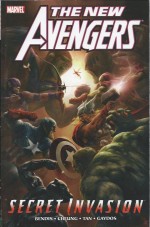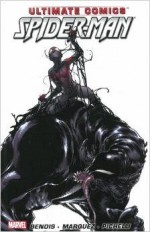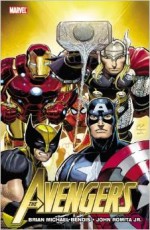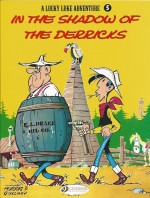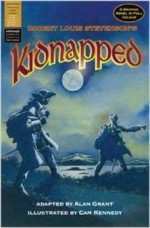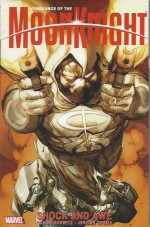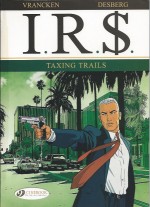
By Vranken & Desberg, coloured by Coquelicot and translated by Luke Spear (Cinebook)
ISBN: 978-1-905460-51-9
The most appetising thing about European comics (and manga too, although we only ever see the tip of that vast iceberg in English) is the sheer breadth of genres, styles and age ranges of material available.
The same used to be true of British and US comics but creeping colonisation by calcified fan-bases has slowly but surely eradicated many types of tale that might pique interest beyond the generalised ghettoes of superheroes, space opera, sexy horror and merchandised adaptations. Even crime and war comics are a rare exception these days.
Thus this quirky but exceedingly readable thriller with a tantalising twist is a welcome treat even if the Franco-Belgian original first saw print in 1999.
The unlikely champion of these sagas is a civil servant with a US government, who once upon a time started employing super-cool and infallibly effective agents to go after the type of tax dodger far beyond the reach of the law. These days, perhaps every country should have one…
Belgian writer Stephen Desberg is one of the bestselling comics author in France. He was born in Brussels in 1954, son of an American lawyer (who was the distribution agent for Metro-Goldwyn Mayer) and a French mother. Stephen began studying law at Université Libre de Bruxelles but dropped out to follow a winding path into the comics biz.
He began with plots and eventually scripts for Will (AKA Willy Maltaite) on Tif et Tondu in Spirou, growing into a reliable jobbing creator on established strips for younger readers before launching his own in the Stéphane Colman illustrated Billy the Cat (a funny animal strip, not the DC Thomson superhero series).
Thereafter came 421 with Eric Maltaite, Arkel (Marc Hardy), Jimmy Tousseul (with Daniel Desorgher) and many others. During the 1980s he gradually redirected his efforts to material for older readerships (see for example The Garden of Desire). In 1999 he created popular modern thriller IR$, and a year later added historical drama Le Scorpion to his catalogue of major hits.
Bernard Vranken was an award winning artist by the time he was fifteen and was working on Tintin a year later. Whilst studying architecture at Saint-Luc he took some comics courses by legendary illustrator Eddy Paape at St. Gilles and his true career-path was set. Vranken was crafting short stories for A Suivre when he met Desberg and in 1996 they collaborated for the first time on epic romance Le Sang Noir. Three years later they traded love for money and launched IR$…
The premise is simple and delicious, and Cinebook’s premiere English edition in 2008 doubled your money by combining the first two albums – La voie fiscale and La stratégie Hagen – into one compelling compilation.
Taxing Trails opens with stylish American mystery man Larry B. Max calling his new favourite chat-line girl Gloria Paradise (Larry hates complications in his life) to kill some time before heading out.
A few days previously a Swiss banker had been rather ostentatiously splurging cash on a visit to California when he’d ended up as a freeway statistic. However his spending spree and sudden demise had raised a few red flags…
A right place, wrong time kind of guy, Larry was decisively ending a convenience store hold-up he’d stumbled into when he got a call and soon was working his way up a deadly chain of wealthy reprobates trying to track down who had issued the contract on the banker…
Before long Max has identified the former Luc Cretier as a minor banker but major blackmailer who pushed someone too hard and paid the price. That said, the person he was putting the squeeze to is of far more interest to the tax detective. Jewish-American Abraham Loewenstein is a rags-to-riches holocaust survivor who turned tragedy into a life of success and good works.
Larry however has seen something the rest of the world has not and his interview with the aged activist (as an author investigating the scandal of Jewish gold illegally held in Swiss Banks) puts him on another profitable track…
Those esteemed institutions had always found some legal chicanery to deny the claims of survivors and family-members who tried to attempted to retrieve their property but in recent years – due the efforts of people like Loewenstein – have seen frustrated victims beginning to win justice through court cases exposing bank practises.
Now Larry’s forensic investigation lead straight to those so-secretive Swiss Banks and a generations-long scandal regarding the illegal retention and redistribution of Jewish funds deposited whilst Hitler was rising to power.
Although the Nazis are long gone, their heritage of plunder remains in those Helvetic vaults and somehow enigmatic, untouchable multi-billionaire survivor of the Death Camps Moshe Geldhof is involved…
Larry knows he’s on to something when his car is sabotaged and less likely accidents – such as a girl on a motorcycle blasting him with a machinegun – start to complicate his investigation. Undaunted, he confronts Geldhof in a fancy New York restaurant and finds that hot lead is the first course on the menu…
After Abraham is murdered for knowing too much, a spectacular, breakneck car chase results in Max arresting Geldhof, but for once the infallible tax man has grossly underestimated the sheer power of money…
The story concludes in The Hagen Strategy as the scene shifts back to 1943 for the incredible truth about Moshe Geldhof as the indefatigable Max delves deeper into the history of the man who has the ear of governments, and especially of Israel.
In America the man himself seems to be “too big to fail†but his sudden liberation only pushes Larry to even greater efforts. That means heading to Bern and cultivating the attentions of Geldof’s ferociously Amazonian daughter Lenni whilst her dad is tangled in red tape…
No sooner has he broached the palatial fortress-like mansion, however, than the sinister patron turns up and the hunt is on, with a cadre of heavily armed killers at Max’s well-shod heels…
Larry has finally gleaned the true appalling secret of the contemporary Croesus and the truth is something his government can’t cover for him. Now he has only one possible ally in his all-or nothing-war against the money-man and places a call to Mossad…
Sleek, lean, almost Spartan in its lithe, muscular tribute to James Bond movies, IR$ is a splendidly effective, stylishly gritty thriller series that will delight fans of modern mayhem in all its literary and artistic forms.
Only death and taxes are inescapable, and Larry B. Max offers either or both in one suavely, economical package…
Original edition © 1977 Editions du Lombard (Le Lombard/Dargaud SA) 1999-2000 by Desberg &Vrancken + Job. English translation 2008 © Cinebook Ltd.

